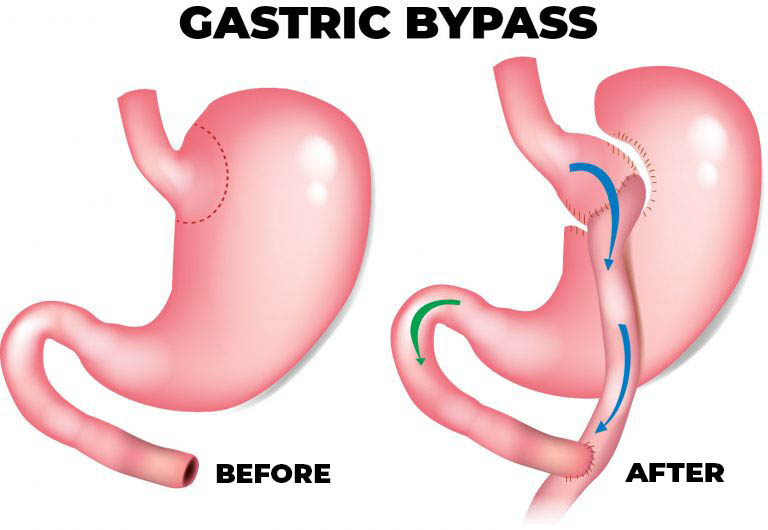The International Bariatric Clinic at Szpital na Klinach
Gastric Bypass
This treatment is highly recommended for people whose body mass index is higher than 35 and they also have type 2 diabetes and metabolic syndrome. This surgery is also recommended in patients with gastroesophageal reflux disease, which is often associated with obesity. The gastric bypass is very effective in enabling weight loss within 6-12 months by significantly reducing the physiological processes involving the absorption and digestion of food and, above all, normalizing metabolic processes. This can lead to a reversal of type 2 diabetes in many patients. Just as in the sleeve gastrectomy, we provide our patients with the expertise of a bariatrician, dietician, and psychologist throughout their entire treatment period to ensure a comprehensive medical support network and the best possible outcomes.
What is the Gastric Bypass procedure?
To understand this procedure, it is useful to know that the small intestine are divided into 3 parts, each getting further from the stomach: duodenum, jejunum, ileum. The gastric bypass procedure involves dividing the stomach into two separate parts. The smaller of the two, with a capacity of 100 ml, is connected to the jejunum section of the small intestine so that the second, larger part, along with the bypassed sections of the early small intestine, the duodenum, are excluded from normal digestion and absorption of food. However, these parts are still reconnected to the rest of the small intestine, forming a second anastamoses.
The “small stomach” design prevents patients from taking an overly large portion of food at once. Additionally, by having food fall directly into the latter small intestine, bypassing the duodenum, the total time for food digestion and absorption is reduced. In summary, this procedure significantly reduces the volume of food consumed and limits its absorption. After surgery, the patient must follow a special diet and supplement vitamins and trace elements including vitamin B12, iron, and calcium that are normally absorbed in the earlier parts of the small intestine.
The standard length of hospital stay: up to 5 days

Preparation for the procedure
Laboratory tests:
- Blood count, blood group, and Rh factor
- Basic tests (sodium, potassium, glucose)
- EKG
- Gastroscopy
- Other tests may be ordered by your attending physician as needed
Benefits:
- Rapid weight loss – during the first 6-12 months after surgery, patients lose approx. 65-70% of excess body weight
- Strong control of the amount of food consumed
- Reduction in the absorption of unhealthy nutrients – carbohydrates, fats, and sugars
- Quick and effective improvement of glycemia in patients with type 2 diabetes
- Significant improvement or resolution of gastroesophageal reflux
Procedure after surgery and during recuperation:
- Stand up and walk within a few hours
- Liquid or mixed diet for the first 2 weeks
- Use the recommended vitamins and supplements daily
Potential complications:
- Bleeding of the stomach
- Leakage of food where the stomach connects to the intestines
- Reduced absorption of nutrients and vitamin leading to physiological deficiencies
- Iron deficiency (anemia)
- Ulceration of the anastomosis between the stomach and the intestine
- Intestinal torsion and obstruction

